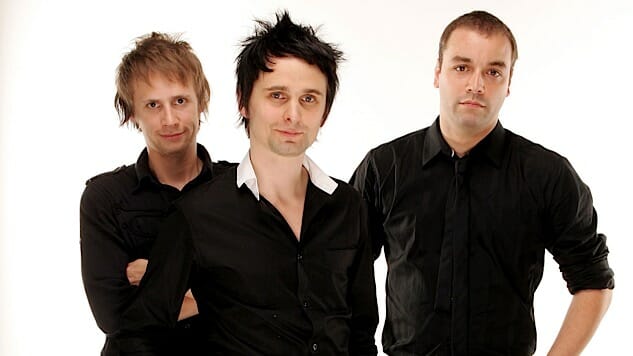14 Awesome Modern Power Trios

Massive ensembles like Arcade Fire and Broken Social Scene create wonderfully lush, orchestral music that could only be pulled off in a large group—but there’s a time and place for everything, and sometimes that tight-knit, bare-necessities combination of guitar-bass-drums beckons forth. These three instruments make up the “power trio,” and its open structure places a great deal of exposure on each band member: In a three-person configuration, there’s a lot more weight to pull and space to fill per member.
Power trios tend to come in waves of popularity: everywhere in the ‘60s (Cream, Jimi Hendrix Experience), rarer in the ‘70s and ‘80s (though still represented by groups like Rush, Motörhead and Violent Femmes), then back in full swing in the ‘90s (Nirvana, Sublime, Primus, Green Day, etc.). With the bevy of new bands that have cropped up in the 2000s, power trios have still maintained a steady presence, and this list is a tribute to those bands who have kept the tradition alive.
To qualify as “modern” for the purpose of this list, the band’s first album must have come out no more than 15 years ago. I ordered this list, more or less, by bands that have best defined the genre in the public eye in recent years, rather than by a judgment of talent (although my personal taste inevitably reared its head). Also, while some of these bands may have members who double up on other instruments from time to time, I excluded three-person bands whose configuration doesn’t include guitar, bass and drums (like Boris), sticking with the true meat-and-potatoes definition. With that, I present 14 bands who epitomize the modern-day power trio.
14. THE THERMALS
Portland, Ore.
Hutch Harris: vocals, guitar
Kathy Foster: bass, vocals
Westin Glass: drums, vocals
Since the departure of second guitarist Ben Barnett in 2003, lo-fi indie-punk trio The Thermals have remained a tight-knit power trio that kicks up an unholy amount of noise and abrasion within often catchy musical structures a la Pavement. Less typical for their genre is the intricacy of Harris’ lyrical concepts, often painting nightmarish, quasi-apocalyptic scenarios, like totalitarian Christian regimes terrorizing the world—the backdrop for their critically lauded 2006 album The Body, the Blood, the Machine.
13. THE JOY FORMIDABLE
Mold, North Wales
Ritzy Bryan: vocals, guitar
Rhydian Dafydd: bass, vocals
Matt Thomas: drums
Formed in 2007 after the demise of Bryan and Dafydd’s previous band Sidecar Kisses, The Joy Formidable doesn’t completely shed that project’s post-punk skin but injects a heavy dose of psychedelia and shoegaze into the mix. The main focal point is Bryan’s dreamy, airy vocal melodies which float above the muscular, churning sea of guitar and bass. This year’s The Big Roar adds a touch of the anthemic to The Joy Formidable’s sonic palette, embodied in the indelibly hooky “Whirring,” already a staple of sorts for the trio.
12. THE LONDON SOULS
New York, N.Y.
Tash Neal: vocals, guitar
Kiyoshi Matsuyama: bass, vocals
Christ Saint: drums, vocals
Brand-spanking new (their debut album dropped this summer), this trio has a raw, unabashedly retro sound heavily indebted to the British blues boom bands of the late ‘60s, most notably The Jimi Hendrix Experience. With the intertwining vocal interplay of Neal and Matsuyama, surging guitar riffs and solos, and drop-of-a-dime control over dynamics, the group plays just like the pioneers of the power trio and is one of the most promising bands to gain national attention this year.
11. BIFFY CLYRO
Kilmarnock, Scotland
Simon Neil: vocals, guitar
James Johnston: bass, vocals
Ben Johnston: drums, vocals
These endearing Scottish lads play an accessible, upbeat brand of power pop in the vein of Weezer, but despite a lineup that has remained unchanged, this wasn’t always the case: Biffy Clyro’s first three albums were more experimental and much more aggressive, the math rock-inspired structures and scream-laden vocals making them sound like a completely different band than the Biffy Clyro of today. Beginning with 2007’s break-out Puzzle, they abruptly shifted toward a smoother, more polished style. This has alienated many old fans but afforded them a large number of new ones. Hear the difference for yourself below.
10. EARL GREYHOUND
New York, NY
Matt Whyte: vocals, guitar
Kamara Thomas: bass, vocals
Ricc Sheridan: drums
Fellow New York City band The London Souls are an eerily similar match to Earl Greyhound, who have been around for a few more years. Both trios have a biracial and co-ed lineup where the guitarist and main vocalist is male and the bassist and secondary vocalist is female and both channel the hell-raising blues-rock of the late ‘60s, but Earl Greyhound are more eclectic and harder to classify. Whyte and Thomas wail in harmony like disciples of Robert Plant, and the riffs have plenty of drive and crunch, but the band also isn’t afraid to get angular and psychedelic or dip into poignant ballad territory.
9. LOS LONELY BOYS
San Angelo, Texas
Henry Garza: guitar, vocals
Jojo Garza: bass, vocals
Ringo Garza: drums, vocals
Other than their chart-topping 2005 single “Heaven,” Los Lonely Boys haven’t released anything notable, but these three Chicano rockers deserve a spot on the list on the merits of their live performances alone. With a musical chemistry that runs as thick as the blood between them (all three are brothers), their raging shows have garnered a reputation for sunny three-part harmonies and flawless instrumental dexterity and fearless improvisational passages. The song below showcases their fiery musicianship when sharing the stage (and don’t worry, it’s not “Heaven”).
-

-

-

-

-

-

-

-

-

-

-

-

-

-

-

-

-

-

-

-

-

-

-

-

-

-

-

-

-

-

-

-

-

-

-

-

-

-

-

-








































